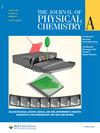Evidence of Nanometric-Sized Phosphate Clusters in Bioactive Glasses As Revealed by Solid-State 31P NMR
IF 2.781
引用次数: 52
Abstract
Bioactive glasses are able to form strong bonds to bone. This property, crucial for medical applications, depends on the glass composition and structure. Dissolution of phosphates in melt-quenched silicate glasses raises the question of chemical homogeneity and possible formation of clusters. A detailed structural characterization of the bioactive glasses is thus highly desirable. In this work, the nature of the distribution of phosphate units in a melt-quenched bioactive glass is elucidated for the first time using 31P spin-counting solid-state NMR experiments. The structure of a dense bioactive calcium silicate glass with 2.6 mol % of phosphorus oxide is shown to exhibit nanometric-sized chemical and structural heterogeneities. Clear experimental evidence of the presence of phosphate clusters of five and six PO4 tetrahedral units embedded in the disordered polymeric silicate network is given.固态31P核磁共振揭示了生物活性玻璃中纳米级磷酸盐团簇的证据
生物活性玻璃能够与骨骼形成牢固的结合。这一特性对医疗应用至关重要,取决于玻璃的成分和结构。磷酸盐在熔融淬火硅酸盐玻璃中的溶解提出了化学均匀性和可能形成团簇的问题。因此,生物活性玻璃的详细结构表征是非常需要的。在这项工作中,首次利用31P自旋计数固体核磁共振实验阐明了磷酸盐单元在熔融淬火生物活性玻璃中的分布性质。含有2.6 mol %氧化磷的致密生物活性硅酸钙玻璃的结构显示出纳米级的化学和结构非均质性。明确的实验证据表明,在无序聚合物硅酸盐网络中嵌入了5个和6个PO4四面体单元的磷酸盐簇。
本文章由计算机程序翻译,如有差异,请以英文原文为准。
求助全文
约1分钟内获得全文
求助全文

 求助内容:
求助内容: 应助结果提醒方式:
应助结果提醒方式:


